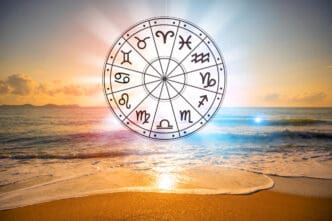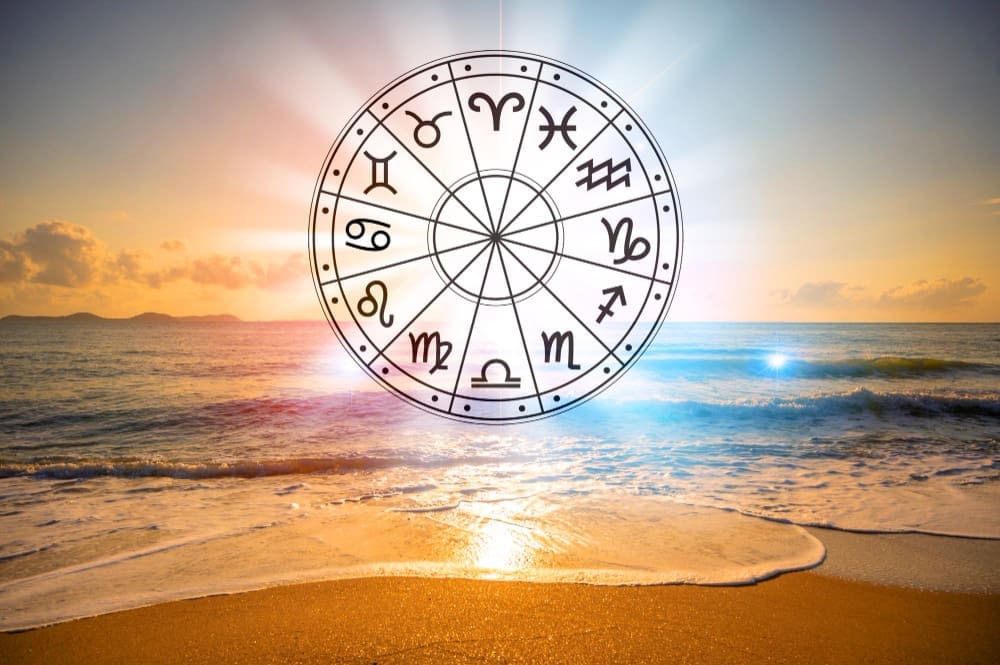The twelve zodiac signs, known in Vedic Astrology as Rashis, form the very bedrock of this ancient system of cosmic interpretation. These Rashis are 30-degree segments of the celestial sphere that represent distinct archetypal energies influencing an individual’s personality, life path, and karmic blueprint from the moment of birth. Unlike their Western counterparts, Vedic Rashis are calculated using the Sidereal zodiac, which accounts for the precession of the equinoxes, providing a different, astronomically precise celestial mapping. Understanding your key Rashis—primarily your Ascendant (Lagna) and Moon Sign (Chandra Rashi)—is paramount in Jyotish, as it provides the essential key to unlocking your birth chart (Kundli) and gaining profound insight into your mind, body, and soul’s journey through this lifetime.
What are Rashis? The Sidereal Foundation of Jyotish
At the heart of Vedic Astrology, or Jyotish, lies the concept of the Rashi. These are not merely constellations but specific zones of energy through which the planets (Grahas) transit. The entire 360-degree path of the Sun, as seen from Earth, is divided into these twelve equal parts, each spanning 30 degrees.
A crucial distinction between Vedic and Western astrology is the zodiac system used. Vedic Astrology employs the Sidereal zodiac, which is fixed to the stars. It uses a correction factor called the Ayanamsha to account for the slow wobble of the Earth on its axis, a phenomenon known as the precession of the equinoxes. This ensures that the signs correspond to the constellations they were named after thousands of years ago.
In contrast, Western astrology uses the Tropical zodiac, which is fixed to the seasons and begins at the point of the spring equinox. Due to precession, these two zodiacs are currently misaligned by approximately 24 degrees. This means your Sun sign in a Western newspaper horoscope is very likely different from your Sun sign in a Vedic chart. This Ayanamsha difference is why many people who identify as a Leo in Western astrology might discover they are a Cancer in the Vedic system.
The Three Key Signs: Lagna, Chandra, and Surya Rashi
While Western pop-astrology places nearly all its focus on the Sun sign, Jyotish offers a more nuanced, tripartite view of identity. It emphasizes the Ascendant and the Moon sign as being more influential in an individual’s life experience.
The Ascendant (Lagna): Your Outer Self and Life Path
The Lagna, or Ascendant, is the Rashi that was rising on the eastern horizon at the exact time and place of your birth. It represents the “first house” of your birth chart and is considered the cornerstone of the entire horoscope. It governs your physical body, your appearance, your overall health, and the personality you project to the world.
Think of the Lagna as the lens through which you view the world and, in turn, how the world perceives you. It sets the stage for your entire life, defining the environment you are born into and the general trajectory of your journey. The planet that rules your Lagna sign becomes your “chart ruler,” a highly significant Graha that holds immense sway over your destiny.
The Moon Sign (Chandra Rashi): Your Inner World and Mind
In Vedic thought, the Moon (Chandra) represents the mind (Manas), emotions, intuition, and feelings of happiness and contentment. Your Chandra Rashi, the sign where the Moon was placed at your birth, is therefore of supreme importance. It reveals your inner nature, your emotional responses, your subconscious patterns, and what you need to feel nurtured and secure.
The Chandra Rashi is so vital that it forms the basis for the famous Vimshottari Dasha system, the primary predictive tool in Vedic Astrology that outlines the timing of life events. It is also used for general daily, weekly, and monthly transit predictions, as the Moon’s fast movement makes it a sensitive indicator of prevailing energies.
The Sun Sign (Surya Rashi): Your Soul and Core Identity
The Sun (Surya) represents the Atma, or the soul. It is your core essence, your ego, vitality, confidence, and sense of self. The Surya Rashi, or the sign the Sun occupied at your birth, speaks to your innate character, your leadership abilities, and your connection to authority and father figures.
While the Sun’s position is fundamental to your being, its interpretation in day-to-day life is often seen as secondary to the more immediate influences of the Lagna (your interaction with the world) and the Moon (your emotional state). It represents the unchanging, eternal part of you, whereas the Moon and Lagna describe the more dynamic aspects of your human experience.
A Journey Through the 12 Vedic Signs (Rashis)
Each Rashi possesses a unique combination of an element, a modality, and a ruling planet, which together define its core characteristics.
1. Mesha (Aries)
Ruled by Mars (Mangal), Mesha is a movable, fire sign symbolized by the Ram. Individuals with a prominent Mesha influence are pioneers—energetic, courageous, impulsive, and direct. They are natural leaders who thrive on action, competition, and new beginnings, but can sometimes be impatient or aggressive.
2. Vrishabha (Taurus)
Ruled by Venus (Shukra), Vrishabha is a fixed, earth sign symbolized by the Bull. This Rashi embodies stability, patience, and a love for earthly pleasures like good food, comfort, and beauty. They are reliable and hardworking, but their fixed nature can also manifest as stubbornness and resistance to change.
3. Mithuna (Gemini)
Ruled by Mercury (Budha), Mithuna is a dual, air sign symbolized by the Twins. This sign is all about communication, curiosity, and intellect. Mithuna natives are adaptable, witty, and sociable, with a constant thirst for information. Their duality can also lead to restlessness and a scattered focus.
4. Karka (Cancer)
Ruled by the Moon (Chandra), Karka is a movable, water sign symbolized by the Crab. As the sign of the cosmic mother, Karka is deeply nurturing, emotional, and intuitive. These individuals are highly protective of their loved ones and home but can be prone to moodiness and insecurity, retreating into their shell when hurt.
5. Simha (Leo)
Ruled by the Sun (Surya), Simha is a fixed, fire sign symbolized by the Lion. This Rashi radiates confidence, authority, and generosity. Simha natives are natural performers who love to be the center of attention. They are loyal and warm-hearted leaders, though they can sometimes be perceived as arrogant or overly dramatic.
6. Kanya (Virgo)
Ruled by Mercury (Budha), Kanya is a dual, earth sign symbolized by the Maiden. Kanya energy is analytical, practical, and detail-oriented. These individuals excel at organizing, problem-solving, and acts of service. Their perfectionist tendencies, however, can sometimes lead to being overly critical of themselves and others.
7. Tula (Libra)
Ruled by Venus (Shukra), Tula is a movable, air sign symbolized by the Scales. Tula is the sign of balance, harmony, justice, and relationships. Natives are charming, diplomatic, and sociable, with a strong aesthetic sense. Their desire for fairness can make them indecisive, as they constantly weigh pros and cons.
8. Vrishchika (Scorpio)
Ruled by Mars (Mangal) and co-ruled by Ketu, Vrishchika is a fixed, water sign symbolized by the Scorpion. This is the most intense and transformative sign of the zodiac. Vrishchika natives are passionate, powerful, and investigative, with a magnetic and secretive nature. They delve deep beneath the surface to uncover hidden truths.
9. Dhanu (Sagittarius)
Ruled by Jupiter (Guru), Dhanu is a dual, fire sign symbolized by the Archer. Dhanu seeks truth, wisdom, and freedom. These individuals are optimistic, philosophical, and adventurous, with a love for travel and higher learning. Their honesty can sometimes be blunt, and they dislike being constrained.
10. Makara (Capricorn)
Ruled by Saturn (Shani), Makara is a movable, earth sign symbolized by the Sea-Goat. Makara is the sign of ambition, discipline, and responsibility. Natives are hardworking, patient, and practical, with a focus on long-term achievement and public standing. They can sometimes appear reserved, serious, or overly cautious.
11. Kumbha (Aquarius)
Ruled by Saturn (Shani) and co-ruled by Rahu, Kumbha is a fixed, air sign symbolized by the Water Bearer. Kumbha is the great humanitarian and innovator of the zodiac. Natives are forward-thinking, unconventional, and intellectual, focused on social causes and large networks. Their focus on the collective can sometimes make them seem emotionally detached.
12. Meena (Pisces)
Ruled by Jupiter (Guru), Meena is a dual, water sign symbolized by the Two Fish. Meena represents the end of the zodiacal journey and is the most spiritual and compassionate of the signs. Natives are intuitive, imaginative, and empathetic, often drawn to art and healing. Their sensitive nature can also make them prone to escapism.
The Building Blocks: Elements and Modalities
The characteristics of the twelve Rashis are derived from a combination of their element (Tattva) and modality (Guna), which provide a deeper layer of understanding.
The Four Elements (Tattvas)
The elements describe the fundamental substance of a sign. Fire (Agni) signs are passionate and action-oriented. Earth (Prithvi) signs are grounded and practical. Air (Vayu) signs are intellectual and communicative. Water (Jala) signs are emotional and intuitive.
The Three Modalities (Gunas)
The modalities describe a sign’s mode of operation. Movable (Chara) signs are initiators, always starting new projects. Fixed (Sthira) signs are stabilizers, providing persistence and determination. Dual (Dvisvabhava) signs are adaptable, blending and adjusting to circumstances with ease.
In conclusion, the twelve Rashis of Vedic Astrology offer a rich and profound language for understanding ourselves and our place in the cosmos. They are far more than simple personality labels; they are a map of our inherent energies, our karmic patterns, and our potential for growth. By exploring the nuances of our Lagna, Chandra, and Surya Rashis, we can navigate life with greater awareness, turning celestial knowledge into practical wisdom for a more conscious and fulfilling journey.








